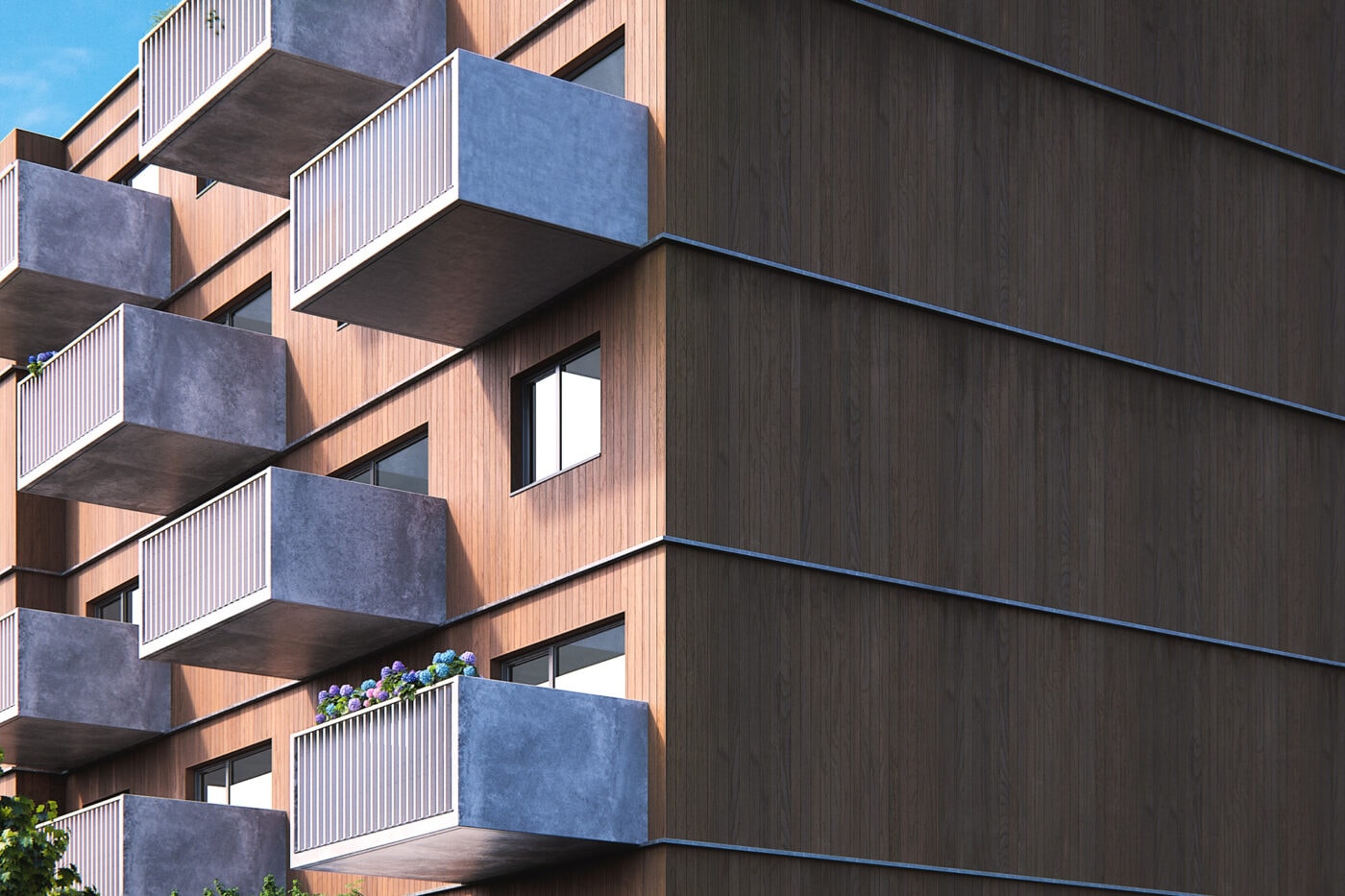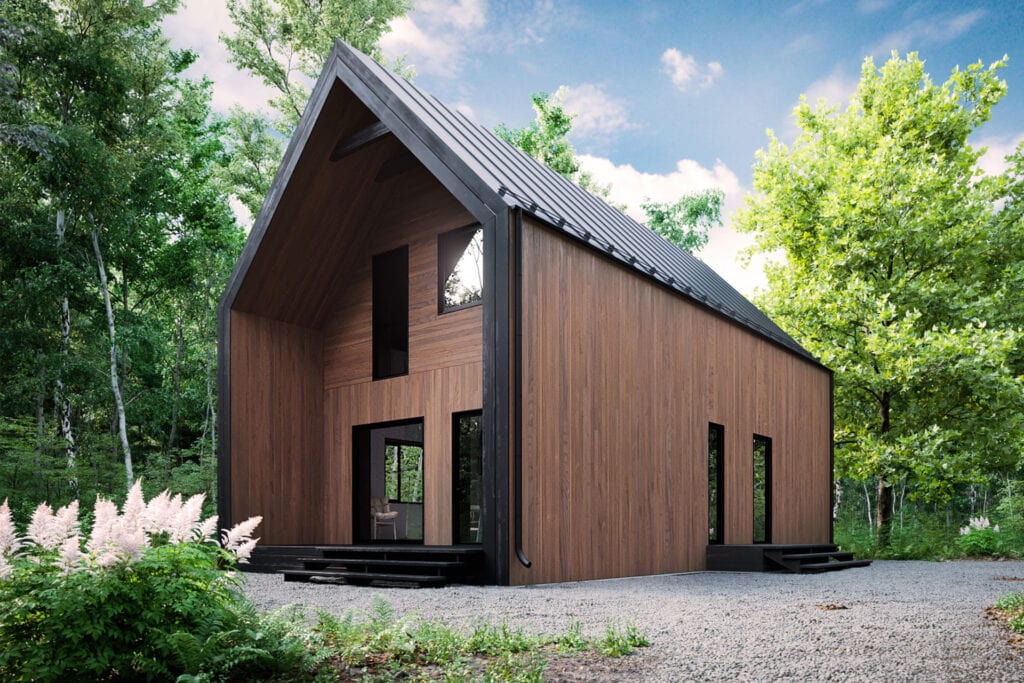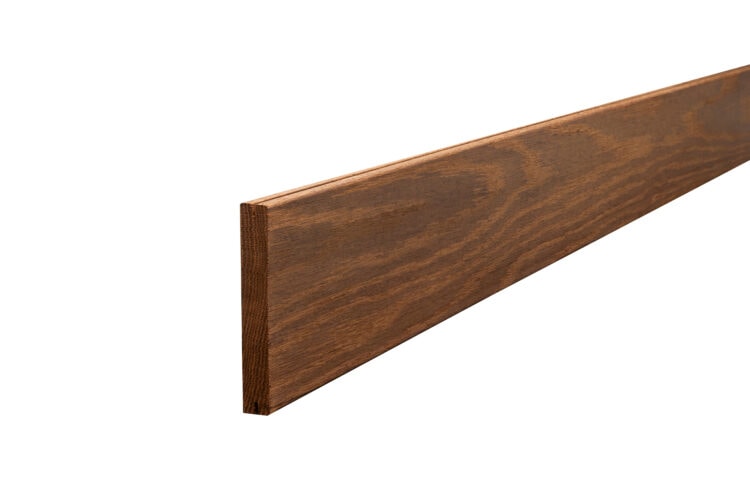Thermally modified oak is a type of wood cladding that has been heat-treated to improve its durability and resistance to decay, while also enhancing its aesthetic appeal. This type of cladding offers several benefits over traditional wood cladding, including improved stability in varying weather conditions, increased resistance to pests and insects, reduced maintenance requirements, and a unique appearance that can add value to any building.

Thermal modification is a process that involves exposing wood to high temperatures, typically between 160°C and 220°C, in the absence of oxygen. This process causes chemical changes in the wood that improve its durability, stability, and resistance to decay. When oak is thermally modified, it becomes more dimensionally stable and less susceptible to warping, splitting, and checking. The process also changes the color of the wood, giving it a rich brown hue that is highly prized for its natural beauty.
One of the main benefits of thermally modified oak cladding is its durability and resistance to decay. The thermal modification process removes moisture from the wood, which makes it less hospitable to fungi and insects that can cause decay.
Additionally, the process creates a chemical reaction in the wood that increases its dimensional stability, making thermowood less likely to shrink, swell, or warp in varying weather conditions. This makes it an ideal material for outdoor applications, such as cladding, where it will be exposed to the elements. Furthermore, the unique appearance of thermally modified oak cladding adds a distinctive and elegant touch to any building, while also adding value to the property.

Oak and thermally modified oak cladding share some similarities, but the thermal modification process provides several advantages that make it a better choice for exterior cladding applications.
Oak is a common type of wood used for cladding due to its attractive appearance and durability. However, it is prone to decay and can warp or split in varying weather conditions. In contrast, thermally modified oak has been heat-treated to remove moisture and improve its stability and resistance to decay.
This process also enhances the natural color of the wood, creating a rich, deep brown hue that is highly sought after for its unique appearance. While oak is a good choice for interior applications, thermally modified oak is the better option for exterior cladding due to its increased durability and resistance to the elements.
Additionally, thermally modified oak requires less maintenance than traditional oak, making it a cost-effective and practical choice for long-term use.
Thermally modified oak cladding has a wide range of potential applications, including residential, commercial, and industrial settings. In residential applications, it can be used to enhance the appearance of homes, add insulation, and protect against the elements.
In commercial applications, it can be used to create a modern and sophisticated look for office buildings, restaurants, and retail spaces. In industrial settings, it can be used for exterior cladding of factories and warehouses, as well as for interior wall and ceiling panels.
The installation of thermally modified oak cladding is similar to that of traditional wood cladding. The cladding can be installed using various methods, including vertical or horizontal boards, overlapping shingles, and tongue-and-groove systems. Proper installation techniques are crucial for ensuring the longevity and stability of the cladding.
In terms of maintenance, thermally modified oak cladding requires little upkeep beyond periodic cleaning and inspection. A simple cleaning with a mild detergent and water can help remove dirt and grime that accumulates over time, while also preserving the wood’s natural beauty.

Thermally modified oak is a premium hardwood species that is part of our Benchmark series. Attractive reddish-brown cladding is designed for those seeking nothing less than the best in quality and style.
The cost of thermally modified oak cladding depends on several factors, including the size and complexity of the project, the type of cladding system used, and the region in which it is installed.
However, when compared to other high-end cladding materials such as stone or brick, thermally modified oak cladding is a cost-effective option that offers several benefits. Additionally, the reduced maintenance requirements of thermally modified oak cladding can result in long-term cost savings for property owners.